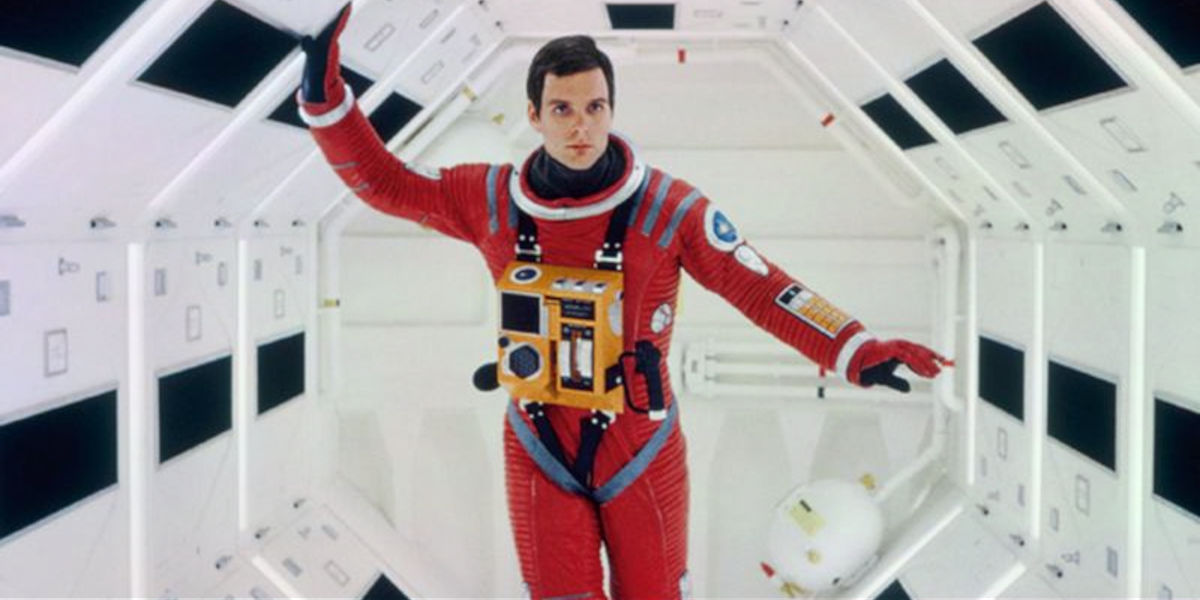In 1968, the world of film and science fiction was forever changed with the release of Stanley Kubrick’s seminal masterpiece, 2001: A Space Odyssey. The film's iconic imagery, innovative special effects, and philosophical undercurrents continue to bewitch, baffle, and bedazzle audiences in equal measure. Today, let’s plunge into the cosmic world of showmanship and ingenuity with an exciting exploration into the making of 2001, decode the enigma of the monolith, and venture a guess at the perplexing ending of this cinematic pacesetter.
Inside the Making of 2001: A Space Odyssey
When author Arthur C. Clarke and director Stanley Kubrick decided to collaborate on what they hoped would be "the proverbial good science fiction movie," little could they have imagined the impact their work would have on the genre and the cinematic world at large. Kubrick, known for his meticulous filmmaking, ensured that 2001: A Space Odyssey would be a visually arresting spectacle that combined the thrill of exploration with chilling existential dread.
The groundbreaking special effects used in the film were born out of exhaustive research and innovative techniques. To create a sense of authentic zero-gravity, Kubrick worked with a team of skilled engineers and astronauts, and the famous centrifuge sequence was filmed in a giant, human-sized hamster wheel. Then there was the extensive use of front-screen projection and detailed miniatures for recreating the lunar landscapes and spacecraft to an astonishing degree of realism, unseen in cinema until then.
What Does the Monolith in 2001: A Space Odyssey Mean?
One of the most enduring mysteries in 2001: A Space Odyssey is the stark, imposing monolith. It appears throughout the film at crucial turning points in the narrative, inciting heated debates about its meaning and purpose. Symbolic, cryptic, and eerily silent, the monolith is a cinematic enigma that continues to baffle audience interpretations five decades after the film's release.
The monolith first appears before prehistoric apes, sparking a significant shift in their cognitive abilities, which leads them to use tools — marking the dawn of civilization.
The next encounters occur millions of years later on the Moon and then near Jupiter, suggesting its influence on technological progress and evolutionary leaps. So, is the monolith a representation of an extraterrestrial intelligence nudging the evolution of mankind? Or perhaps a symbol of timeless knowledge and technology that holds the key to human destiny? The monolith's interpretation remains as varied and infinite as the cosmos it inhabits.
2001: A Space Odyssey Ending Explained
The finale of 2001: A Space Odyssey further accentuates the aura of mystery and obliquity that pervades the film. Astronaut Dave Bowman, the lone survivor of the Jupiter mission, encounters another monolith and is catapulted into what is best described as a psychedelic interstellar journey. The sequence culminates in a surreal scene where he observes himself aging rapidly in a baroque room before being reborn as a Star Child.
This mind-bending ending has invited myriad interpretations over the years, ranging from Bowman achieving a higher state of consciousness, to the Star Child symbolizing the next stage in human evolution, to it being a metaphor for the birth of a new universe itself. As Kubrick intended, the conclusion defies traditional narrative logic, encouraging audiences to derive their own interpretations based on their understanding and experiences.
Unveiling the cinematic marvel
One of the best examples of Kubrick's pattern is the release of "2001: A Space Odyssey," where his cinematic talent truly shone. Every detail - the sets, the characters, the sound design, even the titles - was carefully crafted to portray a unique, space-centric aesthetic. Kubrick’s vision was not just about making a space film, but about exploring the questions that space prompts about who we, as a race, are.
The director meticulously crafted every scene and shot. Kubrick and his team dedicated countless hours to researching and simulating outer space, starting a new trend in cinema. The effort put into creating the setting bolstered the film's impact, turning it into more than a movie - it became a visual symphony of spacial insight.
Eternal influence of Monoliths
The mysterious monoliths in "2001: A Space Odyssey" have become forever ingrained in popular culture. They play a key role in the film, serving as catalysts that drive mankind's evolution from ape-like beings to space-traveling humans. Kubrick’s vision was brilliant - he made the monoliths simple in design, stark black surfaces devoid of any adornment. The objects themselves were the simplest of shapes (rectangular), yet their significance in the story added an abstract depth to their purpose.
This aspect of the film has been highly influential in later works of art and literature. The singular, ominous design of the monoliths reflects themes of the unknown, the incomprehensible expanse of space, and the role of humans in the universe. They have since become symbols for everything - from looming threats to milestones of human progress.
The Mind-Bending Ending: A Leap into Hyperspace
In true Kubrick fashion, "2001: A Space Odyssey" concludes with a psychedelic light show, transporting viewers into some otherworldly dimension. This sequence, known as the „Star Gate“ section, is a mix of colored, swirling, nebulous forms, no doubt meant to represent the protagonist’s journey to new realms of existence.
Kubrick sought to encapsulate the vastness and complexity of space and time visually - an ambitious undertaking indeed. The climax was ultimately a matter of visual interpretation, of exploring the mind-bending nature of space-time. It managed to evoke an array of responses and interpretations from viewers, proving the power of visual storytelling.
In conclusion, "2001: A Space Odyssey" is much more than a cinematic masterpiece. It's a spiritual journey, a thought experiment, and a mesmerizing blend of sci-fi and existential philosophy, proving that sometimes, in the hands of a skilled storyteller like Kubrick, cinema can become art in the truest sense.




